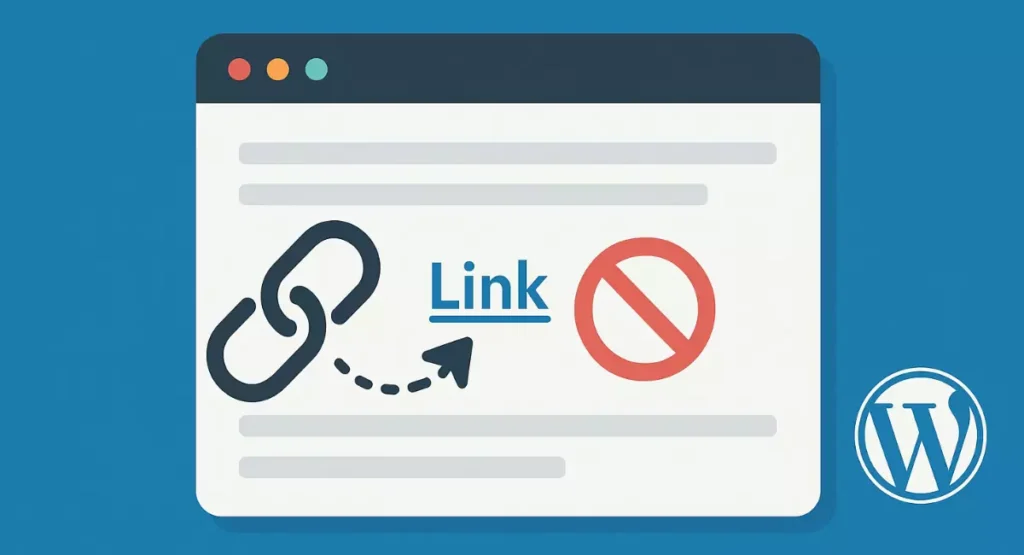Adding relevant links to your page enhances both SEO and user experience by guiding visitors to explore topics further. When a site provides dofollow links, it’s endorsing the linked content and potentially boosting its search engine ranking.
On the other hand, nofollow links signal that while you’re offering valuable resources for users, you’re not passing SEO authority—striking a balance between user value and protecting your site’s domain strength.
But how do you do it on WordPress? In this article, we will learn how to make a link do follow and no follow in the WordPress classic editor and block editor with some simple and easy steps.
How to Make a Link Dofollow and Nofollow (Classic Editor)
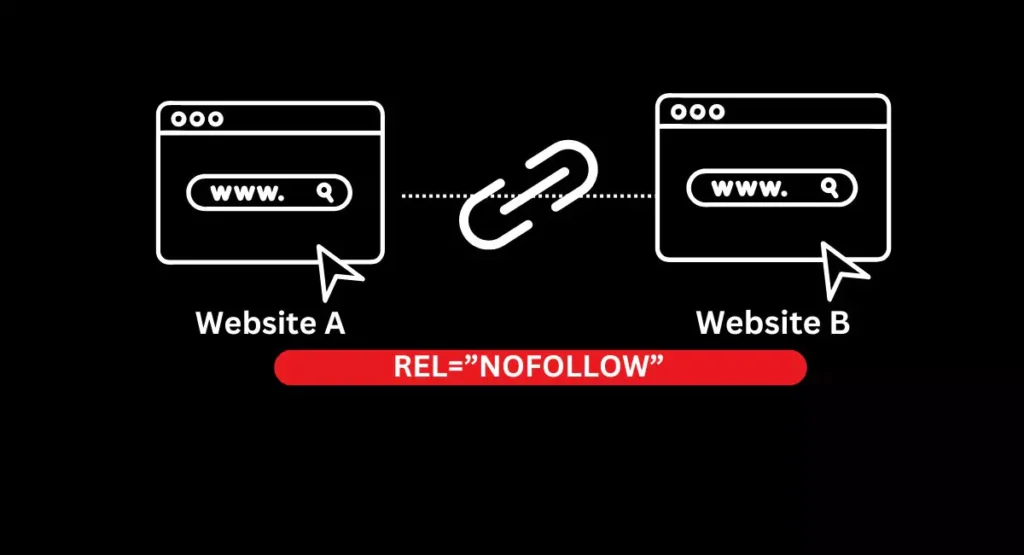
By default, links added in WordPress become dofollow (classic or block editor), meaning they tell search engines to follow the link and pass on some SEO value to the linked page.
Steps to Add a Dofollow Link in WordPress Classic Editor
- Select the Text: Highlight the text in your blog post that you want to turn into a link.
- Insert the Link: Click on the ‘Insert Link‘ button (🔗) in the editor toolbar. A small popup will appear.
- Enter the URL: Paste or type the URL of the external site you want to link to in the field provided in the popup.
- Update: Click the ‘Apply’ button (↵) in the popup to insert the link.
- Done: That’s it! You’ve successfully added a dofollow external link to your blog post.
Steps to Add a Nofollow External Link in WordPress Classic Editor
- Add the Link: Follow the same steps as adding a dofollow link to insert the external link into your post. But one more thing to do here is to open the setting option ⚙️ and click on rel-nofollow as shown in the below image
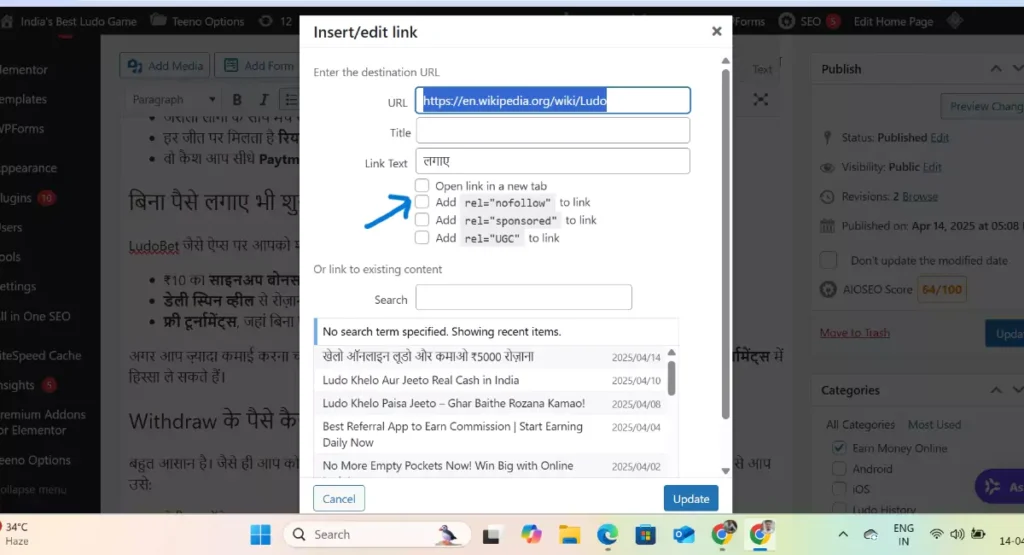
And there you have it! You’ve now learned how to add both dofollow and nofollow external links to your blog posts using the Classic Editor in WordPress.
Adding do-follow & no-follow links on a page in the WordPress block editor follows the same process as in the classic editor.
How to Add a Nofollow Link in the WordPress Block Editor
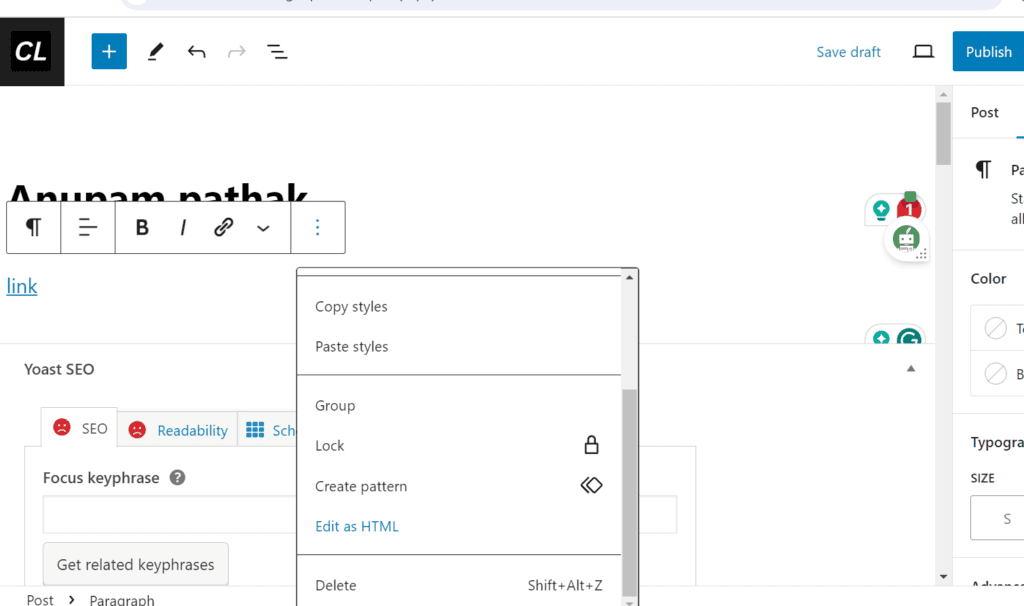
To add a nofollow attribute to an external link in the WordPress Block Editor, follow these steps:
- Add a Dofollow Link: First, add an external link following the steps mentioned above for a dofollow link.
- Click on the Advance option to make the link open in a new tab and scroll down to select option “Search Engine should ignore this link (Mark as nofollow)“
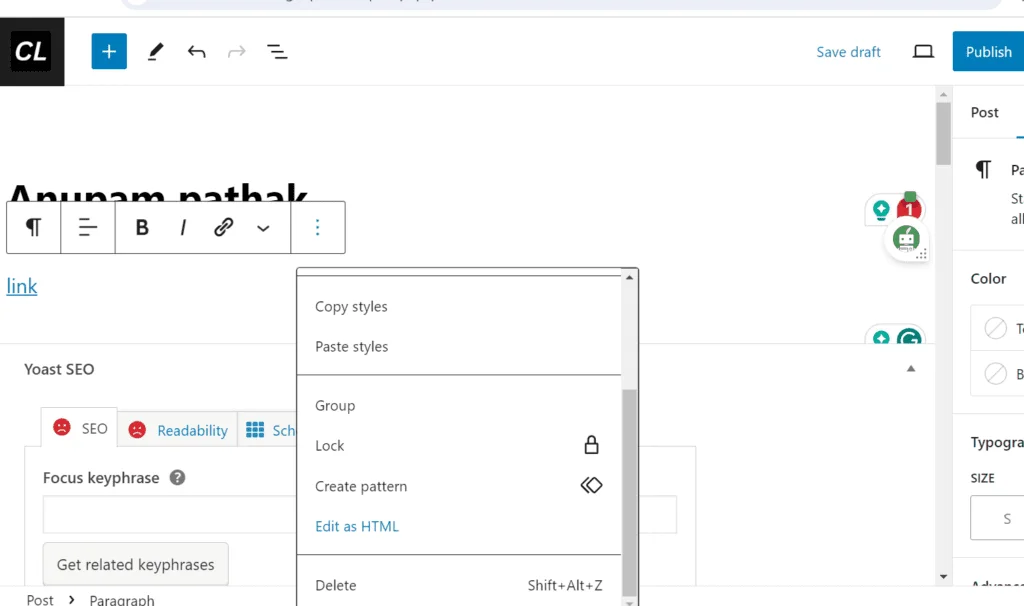
- Done: Your link is now nofollow. You can switch back to the visual editor by clicking on the three dots again and selecting “Edit visually”.
And that’s it! You’ve successfully added nofollow external links to your blog post using the WordPress Block Editor. This method allows you to control which links provide SEO value to other sites while still offering your readers valuable resources.
Optimize your pages by adding external valuable links with a nofollow attribute. Citing your sources makes your work more credible and shows that you’ve done proper research. Start Now
A do-follow external link is a link from your website to another site that passes on some of your website’s authority. It’s like giving a u0022vote of confidence,u0022 telling search engines that the other site is valuable and credible. This can help the linked site rank higher in search results.
A nofollow link tells search engines not to pass SEO value to the linked page. It helps protect your site’s ranking while still allowing users to click the link. And to make a link nofollow, please follow this step:
In WordPress: Add the link → Open settings → Check “nofollow” option.
In HTML: Add rel=u0022nofollowu0022 inside the u003cau003e tag. Example – u003ca href=u0022https://example.comu0022 rel=u0022nofollowu0022u003eYour Text
You don’t need to do anything special. All links are dofollow by default. Just use a normal anchor (u003cau003e) tag like this:
Example:u003ca href=u0022https://example.comu0022u003eYour Anchor Textu003c/au003e
To make a link nofollow, add rel=u0022nofollowu0022 inside the anchor tag.
Example:u003ca href=u0022https://example.comu0022 rel=u0022nofollowu0022u003eYour Anchor Textu003c/au003e
This tells search engines not to pass any SEO authority to the linked site, while still allowing users to visit it.
For Classic Editor:
Add a link normally.
Click the link settings icon.
Check the box or select the option for rel=u0022nofollowu0022.
For Block Editor (Gutenberg):
Add the link as usual.
Open the u0022Advancedu0022 options.
Toggle the option “Search engines should ignore this link (nofollow)”.
Manual HTML Method (any editor):
u003ca href=u0022https://example.comu0022 rel=u0022nofollowu0022u003eYour Text

